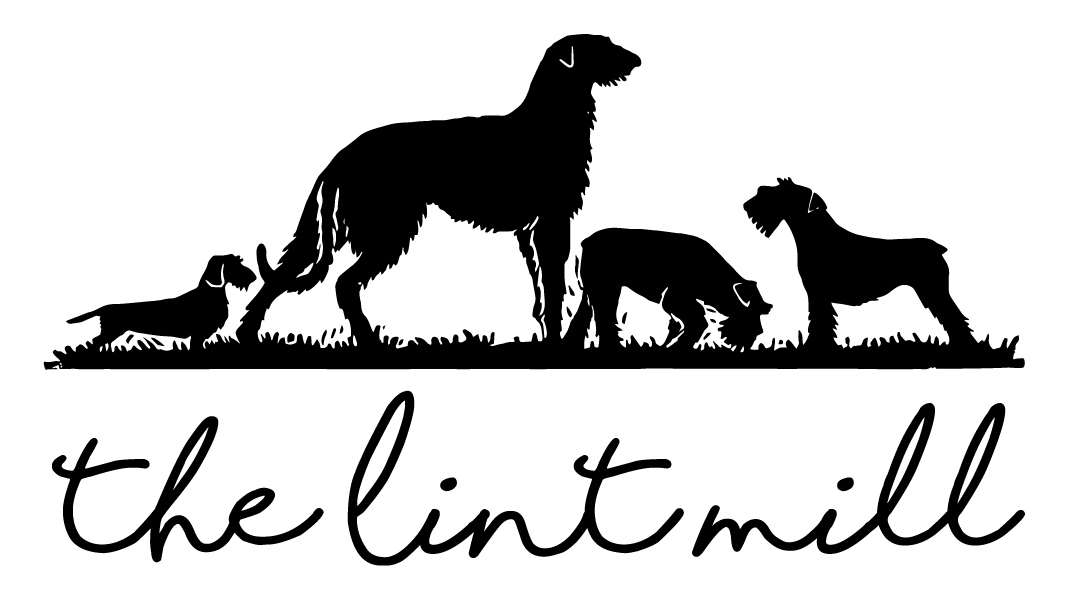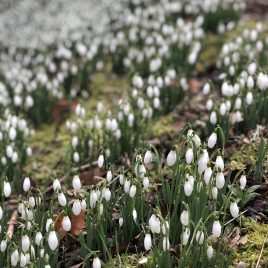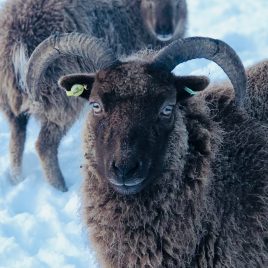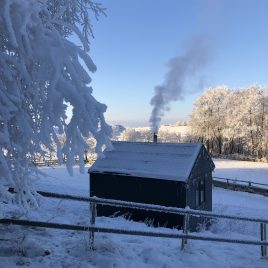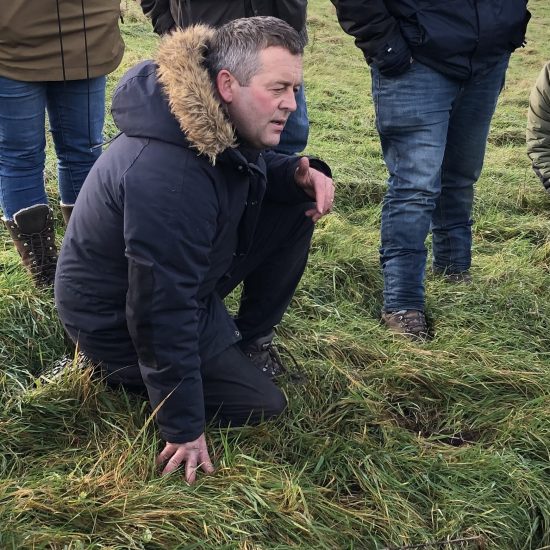
Watching the Grass Grow
I have become a bit of a soil geek and I have been doing a lot of watching grass grow! Do you know that in the places where the thatch is dense, the soil keeps its temperature and the grass continues to grow, even in our Scottish winter! But why is this interesting you might think? Well to put it bluntly, if we want to continue to eat in years to come and we want to start to reverse the damage we’ve done to our planet, then we need to have some radical shifts from the industrial model of farming we have relied on in the past 50 years and that means taking care of our land from the ground up.
We became smallholders in 2009 not because we wanted to be ‘pretend farmers’ or because we wanted to keep lots of cute animals as a hobby but because we wanted to grow food and rear animals in the most ethical way possible, to feed ourselves, our guests and our friends with the lowest carbon footprint we could manage. We were reacting against the industrial model of farming that meant you could buy a whole chicken for £2.79.
So having read James Rebanks books and heard him speak in a number of radio interviews espousing ideas that were radical and called for urgent change but were also filled with understanding for the plight of farmers and of rural communities, I thought I would enlist in his Grazing School at Racy Ghyll Farm in Matterdale. I wanted to learn more about regenerative agricultural practices as they were being lived out on a small hill farm in Cumbria.
It was a chilly but sunny December day, we were sitting on straw bales in the barn, and being invited to introduce ourselves and say how many acres of land we were responsible for. My first task was to fight off ‘imposter syndrome’ as the majority of participants were farmers or stewards of vast tracts of land and there I was with an arts background and 13 acres to care for. But a principle is a principle is a principle and it turns out that ideas that would work on hundreds of hectares could be applied in microcosm to our land too. (It’s vital to note that ‘regenerative agriculture’ is not new, in fact we are just waking up to what has been practised by indigenous communities for millennia.) The application of those principles do vary with the context of each farm and defining the purpose of what each of us was trying to do in our own context, on our own farm big or small, was an important theme of the course. This month’s ‘Quote we are Pondering’ has been a very helpful way for us defining our purpose over the years – that precious intersection where our greatest gladness meets the hunger of the world.
Many of the participants had their own inspiring stories of their regenerative agricultural approaches and there was a lot to learn from each other as well as from James and Caroline. It certainly helped that the course was run in such a supportive and friendly atmosphere, one that encouraged discussion, debate and exchange of ideas around the long trestle tables in the barn where we were nourished with home cooked feasts from Helen Rebanks.
It also turned out that so much of what we were already doing at The Lint Mill was ‘regenerative agriculture’ and was working, so that was very affirming. We already understood the crucial significance of soil health when we began conversion to organic status with the Soil Association in 2016 and we now know that our recent focus on the diversity of species in our grassland is critical in continuing to developing that soil health.
I came away so full of thoughts and I enthusiastically shared it all with Colin (and anyone else who would listen actually!). I also had made a great connection with a vet who teaches at the The University of Glasgow’s School of Veterinary Medicine to facilitate her students coming to get ‘hands on’ with our goats as part of their practical studies. And I’m increasingly fascinated by dung beetles…more of that as the year unfolds.
Eventually all the theory leads to examining the connectedness of things. What we do at The Lint Mill is about relationships; relationships with our guests, relationships with the animals we share our lives with and fundamentally, relationship with our land, every microbe and every blade of grass. The relationship between us and the land we inhabit is so inextricably connected that we ‘know’ more deeply every day that we and the land are in fact the very same thing. We are not part of nature, we are nature and that understanding affects everything we do.
If you’d like to know more about the running of our organic smallholding where we share our regenerative agriculture approach, why not come along to one of our day courses. Details here
